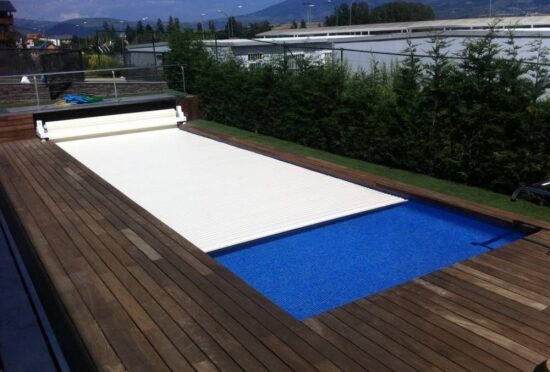Views: 1174
Recent news reports indicate that Menorca has over 10,000 swimming pools. Given this large number, it is necessary to address how to prevent water loss caused by evaporation due to sun and wind exposure on such vast surfaces.
A 40 square meter pool losing about 2 centimeters per day to evaporation equates to 800 liters of water per day. Adjusting for dimensions and seasonal evaporation, this can be estimated at 500 liters per day. This amounts to 3.5 tons of water per week for each pool. With 10,000 pools, this results in 35,000 tons of water lost per week.
If pools are used for about 5 months a year, that totals approximately 22 weeks. Thus, the water loss due to evaporation is 770,000 tons annually. This is almost equivalent to the annual water consumption of the municipalities of Ferreries and Es Migjorn combined, including their urban areas. This calculation does not even account for the substantial volumes of water produced by people emptying and refilling their pools.
Covering Pools to Eliminate Evaporation
Given the reality of so many pools, efforts must be made to reduce water loss due to evaporation. Among the discussions held in various municipalities during the Via Menorca campaign, the idea of covering pools with manual or automatic systems has gained traction.
The goal is to cover the water surface during all the hours the pool is not in use. This significantly reduces losses due to the sun and wind. Simple to install and effective at preventing water loss, there are market options that operate at the push of a button or use various floaters that can be manually repositioned.
Using Seawater in Coastal Hotels
The alternative idea of using seawater for pools, while occasionally mentioned, seems impractical for most private pools due to the complexity of transport, the risk of subsequent discharges into the environment, and potential incompatibility with some installed mechanisms.
However, it could make sense to request that large hotels near the sea use seawater in their pools. Large buildings or hotel complexes often rank among the top water consumers in municipalities. A significant portion of this consumption stems from pool maintenance, which, with heavy daily use, may require partial water renewal daily.
If a double connection to the sea were enabled, all the pool water could be changed daily, saving on maintenance and reducing the use of often environmentally harmful products like chlorine or added salt. This would result in zero freshwater consumption.
Reconsidering the Sector’s Responsibility
We hope that the tourism sector will reconsider its responsibility regarding water consumption on the island.
Disincentivizing Pools Through Land Use Planning
GOB has proposed several times, unsuccessfully, that pools count as part of the buildable volume. This would force a choice, for example, between having a pool or an additional room.
It has also been suggested that, to reduce the buildable volume, a rainwater tank with a capacity equal to or greater than the pool volume should be required during construction.
Currently, Menorca allows one pool per property and parcel, of 35 square meters and 60 cubic meters. Given the scale of this issue on the island and the need to manage water resources much better, it is necessary to reconsider regulations to discourage new installations.
Finally, it is essential to enforce existing regulations and conditions under which projects are approved. The infamously unresolved case of illegal pools in Alaior has been pending for five years with no resolution from the Town Hall. More recently, GOB has reported another case of agritourism in Ciutadella that has installed several pools when only one is permitted.
This text is an adaptation from an automated translation of the original publication in Catalan on the GOB Menorca website.

